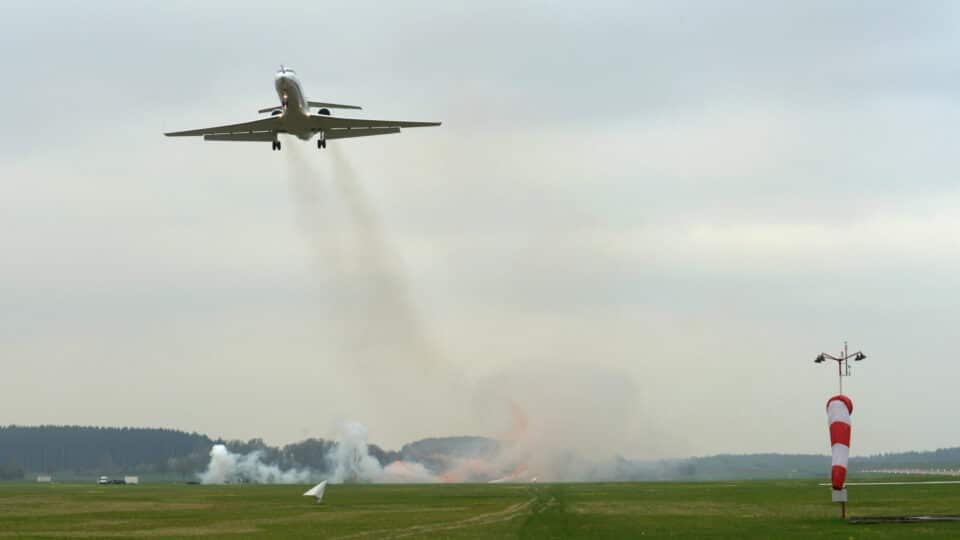Airlines
How AI is Helping Air Travelers Navigate Erratic Weather”

Air travel can be unpredictable, especially when it comes to weather. Turbulent conditions can lead to delays, cancellations, and even dangerous situations for passengers and crew. However, advancements in artificial intelligence (AI) are helping air travelers navigate erratic weather and make informed decisions.
The ability to predict the weather is one way AI is assisting aviators. Massive volumes of data from different sources, such as satellites, weather balloons, and ground-based sensors, can be analyzed using AI-powered weather forecasting. When combined with other data, these models can more precisely predict weather patterns than those produced using conventional techniques.
Providing real-time updates and alerts is another way AI is assisting fliers. AI-powered technologies are being used by airports and airlines to track the weather and inform travelers in a timely manner. A flight delay caused by bad weather, for instance, can be announced to passengers via an alert sent to their smartphones by an airline.
Airfield at Buffalo Airport will be closed(Opens in a new browser tab)
Additionally, route optimization and flight planning are being enhanced by AI. AI-powered algorithms can be used by airlines to analyze weather patterns and modify flight trajectories as necessary. This makes for a smoother and safer flight for passengers by assisting pilots in avoiding turbulence and other weather-related hazards.
AI can also assist airlines in better managing their fleets during disruptions caused by the weather. In order to reduce the impact of weather-related delays and cancellations on customers, airlines are able to use AI-powered systems to reroute planes and optimize their schedules in real-time.
AI is extremely crucial in assisting flight travelers to navigate unpredictable weather. AI is helping airlines and airports make more informed decisions and improve the customer experience with everything from weather prediction to real-time updates and notifications, flight planning, and route optimization.

Airlines
Sanctions & Engine Issues Ground Half of Russia’s A320neo fleet

Russia’s aviation sector, already strained by Western sanctions, faces another setback as nearly half of its Airbus A320neo family aircraft are grounded due to unresolved engine issues.
This development highlights the growing challenges for russia commercial aircraft in maintaining their fleets under the weight of global restrictions and limited access to spare parts.
Out of the 66 Airbus A320neo and A321neo jets in Russia, 34 are now out of service, according to the Kommersant business newspaper. These planes are powered by engines manufactured by Pratt & Whitney, a subsidiary of RTX Corporation.
DAMAC Air: Dubai’s New Luxury Airline Offers Free Flights for Registration
The engines are affected by a previously identified defect in the metal used for certain parts, prompting accelerated inspections and maintenance.
Sanctions have compounded the issue, blocking the supply of essential components from major manufacturers like Boeing and Airbus. Without proper maintenance, experts warn that these aircraft may face decommissioning as early as 2026.
COMAC Unveils Plans for the C929 to Rival Airbus and Boeing
Airlines like S7, which operates a significant portion of these grounded jets, plan to conserve the engines for future use during peak travel seasons. However, reports suggest that over 20 of S7’s Airbus planes have engines that have already reached the end of their operational lifespan. Recently, russia seeks assistance from kazakhstan’s airlines to bolster its domestic flights.
While some A320neo and A321neo planes in Russia are equipped with French-made LEAP engines, which are seen as less problematic, the challenges remain daunting.
The situation underscores the long-term impact of sanctions on Russia’s aviation sector and the increasing difficulties in keeping its modern fleets operational.
-

 Aviation2 months ago
Aviation2 months agoMicrosoft Flight Simulator Raises $3 Million to Bring Back the An-225 Mriya
-

 Airlines2 months ago
Airlines2 months agoQantas Engineers Stage Walkout Over Cost of Living Concerns
-

 Airlines2 months ago
Airlines2 months agoQatar Citizens Can Travel to the United States Without a Visa
-

 Aviation2 months ago
Aviation2 months agoQatar Airways bans these new Electronic Devices on plane
-

 Airlines2 months ago
Airlines2 months agoJapan Airlines Rolls Out Free Domestic Flights to International Passengers
-

 Defence2 months ago
Defence2 months agoWhich Country Has the Largest Fleet of Fighter Aircraft?
-

 Airport2 months ago
Airport2 months agoWestern Sydney Airport Welcomes Its First Plane After 6 Years of construction
-

 Travel2 months ago
Travel2 months agoQatar Airways Launches Four Additional Flights from Amsterdam








